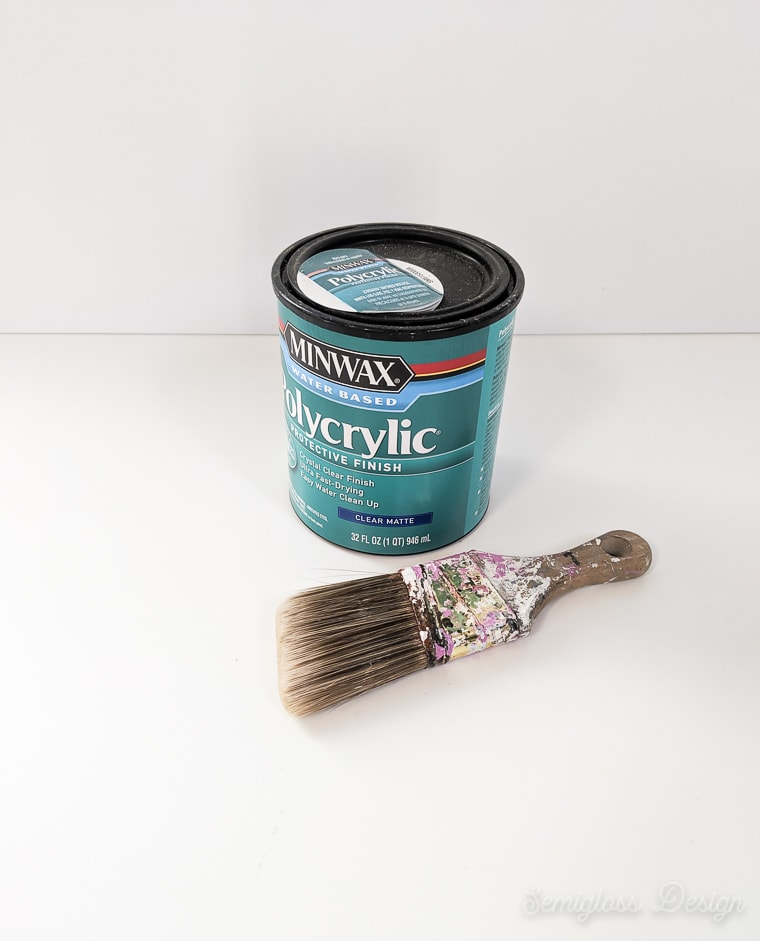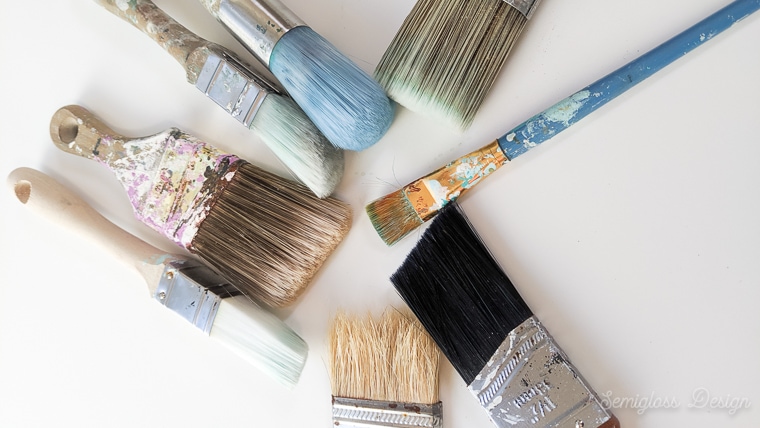Purdy 3-Pack XL Nylon- Polyester Blend Angle Multiple Sizes Paint Brush Set. The Purdy XL brushes feature the iconic copper ferrule. Purdy loads the brush with just the right blend of Dupont solid, round and tapered Tynex and orel filaments for brushes that perform no matter what the job. Keeping this in view, what kind of brush is best for applying polyurethane? Apply polyurethane using a bristle or foam brush about 2″ wide. Foam works well and eliminates the chore of cleaning, because the brushes are cheap and thus disposable. You can apply the first coat full strength or thinned up to half with paint thinner, making, in effect, a wiping varnish. (Use a separate can or jar.).
Choosing the right paintbrush can make all the difference in your next project. Hardware store shelves are lined with a multitude of options; so how do you know which brush to pick? The most important factor in determining which paintbrush is best for your project depends on the type of coating you’re using.
OIL-BASED COATINGS
Natural bristle is the best choice for oil-based paints, varnishes, shellac, alkyd enamels, stains, and polyurethanes. The highest quality bristles come from mainland China. Experienced, traditional painters will say there’s nothing like the finish that a China bristle paintbrush can provide for oil-based coatings. If you’re painting a smooth surface, use a white China bristle for a smooth finish or, if you need to achieve an even finer finish, a China bristle blended with ox hair is recommended. When painting a textured surface, a black China bristle will work best because it’s slightly stiffer and is excellent for high-productivity applications. If you need to paint a rough surface, natural bristle brushes are not recommended. Rough surfaces will break the tips off of natural bristle and will ruin the brush. A synthetic, firm brush is best for this application even when using oil-based coatings because it’s very durable and will resist wear on the rough surface.
WATER-BASED COATINGS
Synthetic brushes are recommended for latex and acrylic paints and water-based wood finishes. Synthetic brushes are available in a variety of filaments including Chinex®, nylon, nylon/polyester blend, and polyester. Chinex® FTP® brushes are designed for today’s paints and offer excellent paint pickup and production with a smooth, professional finish and easy cleanup. Chinex FTP brushes will maintain their stiffness for control even when exposed to heat and humidity. Nylon brushes are very durable but may soften in hot weather or after prolonged use in latex paint. Polyester brushes will maintain their shape and control when exposed to heat but have lower paint pickup and production meaning you will spend more time loading your brush than the wall. Also, today’s paints contain more acrylic resins and fast-drying solids which stick to polyester making them difficult to clean and limit the life of the brush. A nylon/polyester blend brush combines all the positive qualities of nylon (precise tipping, excellent paint pickup, and smooth finish) and polyester (added stiffness and control) and is, by far, the most popular professional paintbrush choice due to their versatility.
The Wooster Brush Company offers quality brushes for every variety of coating available, but different brushes excel in specific applications. To help you select the perfect brush for your next project, visit our Paint Brush Advisor. If you have additional questions or need more information, please contact our Customer Service Department.

My friend John asked me to come over and help him with some crown molding he was getting ready to put up in his new family room. He had some beautiful poplar boards milled to match the trim in the rest of his house, and while I would have opted for a stain to highlight the wavy grain, John and Becky (mostly Becky) wanted it painted. “Happy wife, happy life.” So, paint it was.
When I arrived, John had the boards laid out on sawhorses in his garage, with newspapers spread out to protect the floor. But then he handed me a two-inch wide foam brush. “John,” I said, “Haven’t you heard? The better the brush, the better the finish.”

Which launched us into a discussion of how to choose the right brush for each project. Some of John and Becky’s trim was going to be stained and sealed with a clear finish, which gave me a chance (while we were working) to explain to John how to pick the best brush when you are staining and finishing. Take a look and see what John learned.
Why Does It Matter?
As I explained to John, a brush is a means of transporting a stain or finish from the can to the wood. When applying the stain, you can use either a rag or a brush. I prefer a brush, as it works better for getting stain into into corners and carvings, but you don’t have to use an expensive one or, for that matter, being excessively neat. That’s because your next step will be to wipe off any excess stain, so your rag will erase any brush marks, runs, drips or bristles left by your brush.
When laying down a smooth coat of clear finish, however, the brush will have a major impact on how it looks when it dries. That’s when picking the right brush really becomes important. And as I said to John, “You wouldn’t use a sledgehammer to drive in a finish nail, so why use a foam brush to try to lay down a smooth coat of finish?”
Foam Brushes.
Minwax Polycrylic Brush
I must admit, I do occasionally use foam brushes when staining a small project. Their greatest selling point is they are inexpensive.
But when it comes to applying a smooth coat of clear finish, such as polyurethane, a foam brush is not my first choice. Instead of bristles, it has a blade. The blunt sides leave two parallel ridges of finish, like a snowplow on the highway. Also, the foam head contains air, which can leave bubbles in your finish.
And if you use it for very long, the foam head begins to wear out and get floppy. It will even start to dissolve as you are brushing on stains and finishes containing mineral spirits or lacquer thinner.
Oil-Based Stains and Finishes.
Oil-based products contain mineral spirits, and for them I reach for a natural bristle brush.
For oil-based stains I use a Minwax® Wood Finish™ Stain Brush. These brushes are designed to carry a lot of stain from the can to your project, and hold up much better than foam brushes.
And unlike foam brushes, these natural bristles brushes can be cleaned with ordinary mineral spirits (paint thinner) and re-used indefinitely.
Much better than tossing dozens of foam brushes a year into the garbage can!

Water-Based Stains and Finishes.
Unlike mineral spirits, water causes natural bristles to swell. As they do, they loose their shape. Rather than use a natural bristle brush with water-based stains and clear finishes and watch it swell out of shape (top brush), I use a synthetic bristle brush, such as Minwax® Polycrylic® Brush (bottom brush). These bristles won’t absorb water and won’t lose their shape.
And clean-up is a breeze with soap and water.

Quick Tip: After cleaning, wrap the damp bristles in a paper towel, then secure with a rubber band. Once the bristles are dry, slip your brush back into its cardboard sleeve to maintain their shape.
Use the hole in the end of the handle to hang your brush to dry with the bristles pointing down, letting any remnants of stain or finish escape before hardening.
Good, Better, Best.
As I told John, not all brushes are created equal. They can range in price from less than a dollar to more than twenty dollars. You can spot the difference in three areas: the handle, the bristles, and the ferrel, which holds the bristles to the handle.
Handle – If you used a brush every day to make a living, you would want a contoured handle. Most of us are perfectly content with a standard handle that costs less to make.
Ferrel – Check the metal band holding the bristles to the handle to make sure it is secure. Tug gently on the bristles to see if the ferrel has a firm grasp on them.
Bristles – These should be soft and pliable.
In this photo, the foam brush at the top rates a “Good,” the bristle brush in the middle is a “Better,” and the professional brush at the bottom rates a “Best.”
What Kind Of Brush To Use With Polycrylic
It Takes All Three.
Just as you have different sizes and types of screwdrivers in your workshop, odds are you will need all three types of brushes: foam, natural bristle, and synthetic bristle. You will also want to have them in different widths to fit the different size of cans of stains and clear finishes. The best time to buy them is before you need them, so pick out a selection of types and sizes, store them in a drawer to keep the dirt and dust off them, and clean them after each use. The reward for your efforts will be a stain and a finish that is as smooth as any professional could have achieved.
Minwax Brush
Good Luck!
Polycrylic Foam Brush
Bruce
